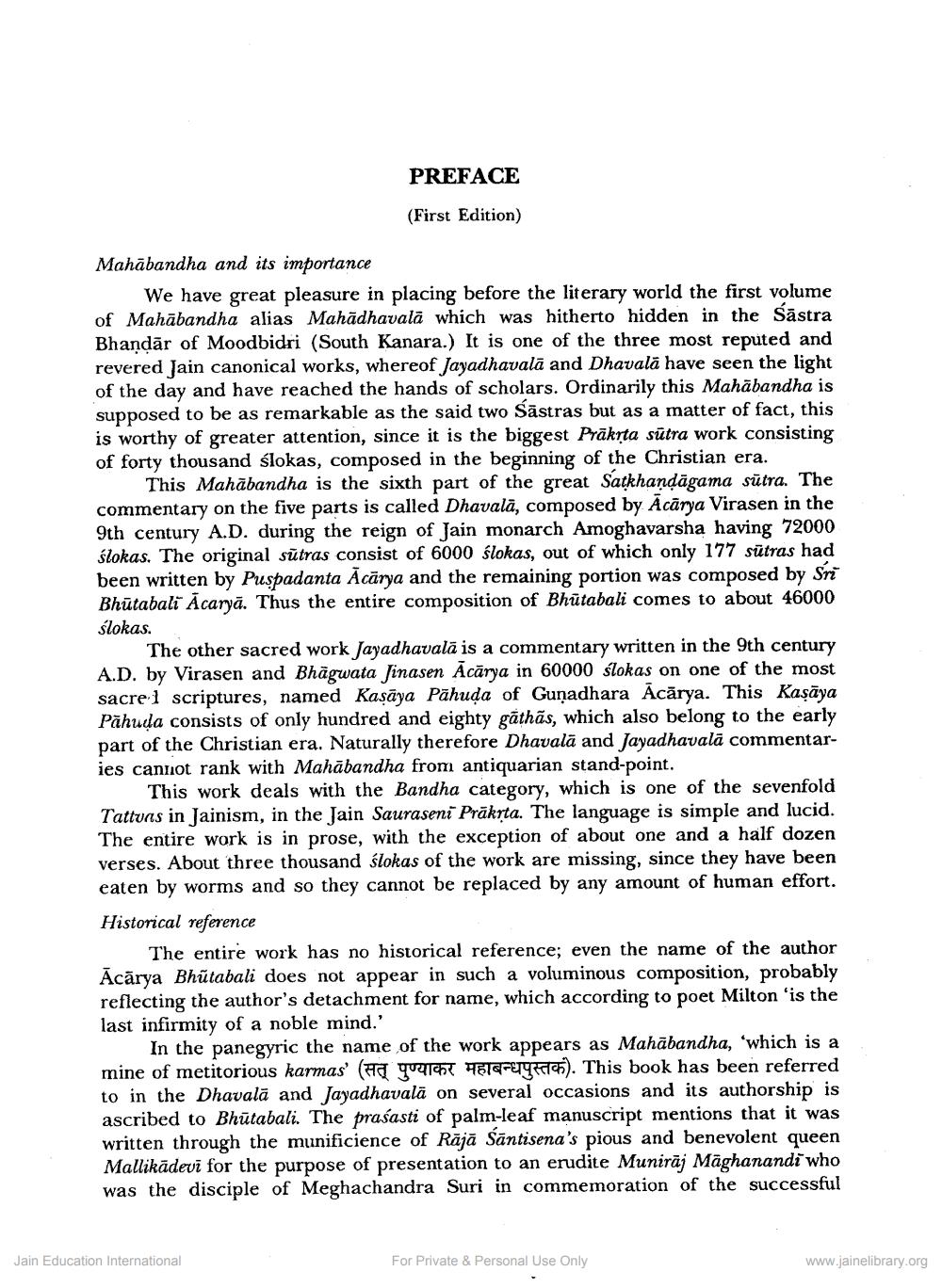________________
PREFACE
(First Edition)
Mahabandha and its importance
We have great pleasure in placing before the literary world the first volume of Mahābandha alias Mahādhavalā which was hitherto hidden in the śāstra Bhandār of Moodbidri (South Kanara.) It is one of the three most reputed and revered Jain canonical works, whereof Jayadhavalā and Dhavalā have seen the light of the day and have reached the hands of scholars. Ordinarily this Mahābandha is supposed to be as remarkable as the said two Šāstras but as a matter of fact, this is worthy of greater attention, since it is the biggest Prākrta sūtra work consisting of forty thousand ślokas, composed in the beginning of the Christian era.
This Mahābandha is the sixth part of the great Satkhandāgama sūtra. The commentary on the five parts is called Dhavală, composed by Acārya Virasen in the 9th century A.D. during the reign of Jain monarch Amoghavarsha having 72000 ślokas. The original sūtras consist of 6000 ślokas, out of which only 177 sütras had been written by Puspadanta Ācārya and the remaining portion was composed by Sri Bhūtabali Acaryā. Thus the entire composition of Bhūtabali comes to about 46000 slokas.
The other sacred work Jayadhavalā is a commentary written in the 9th century A.D. by Virasen and Bhāgwata Jinasen Acārya in 60000 slokas on one of the most sacre 1 scriptures, named Kasāya Pāhuda of Gunadhara Acārya. This Kaşāya Pāhuda consists of only hundred and eighty gāthās, which also belong to the early part of the Christian era. Naturally therefore Dhavalā and Jayadhavalā commentaries cannot rank with Mahābandha from antiquarian stand-point.
This work deals with the Bandha category, which is one of the sevenfold Tattvas in Jainism, in the Jain Sauraseni Prākrta. The language is simple and lucid. The entire work is in prose, with the exception of about one and a half dozen verses. About three thousand ślokas of the work are missing, since they have been eaten by worms and so they cannot be replaced by any amount of human effort. Historical reference
The entire work has no historical reference; even the name of the author Ācārya Bhūtabali does not appear in such a voluminous composition, probably reflecting the author's detachment for name, which according to poet Milton 'is the last infirmity of a noble mind.'
In the panegyric the name of the work appears as Mahābandha, which is a mine of metitorious karmas' (He qualche EGFETY05). This book has been referred to in the Dhavalā and Jayadhavalā on several occasions and its authorship is ascribed to Bhūtabali. The prasasti of palm-leaf manuscript mentions that it was written through the munificience of Rājā Sāntisena's pious and benevolent queen Mallikādevi for the purpose of presentation to an erudite Munirāj Māghanandi who was the disciple of Meghachandra Suri in commemoration of the successful
Jain Education International
For Private & Personal Use Only
www.jainelibrary.org




